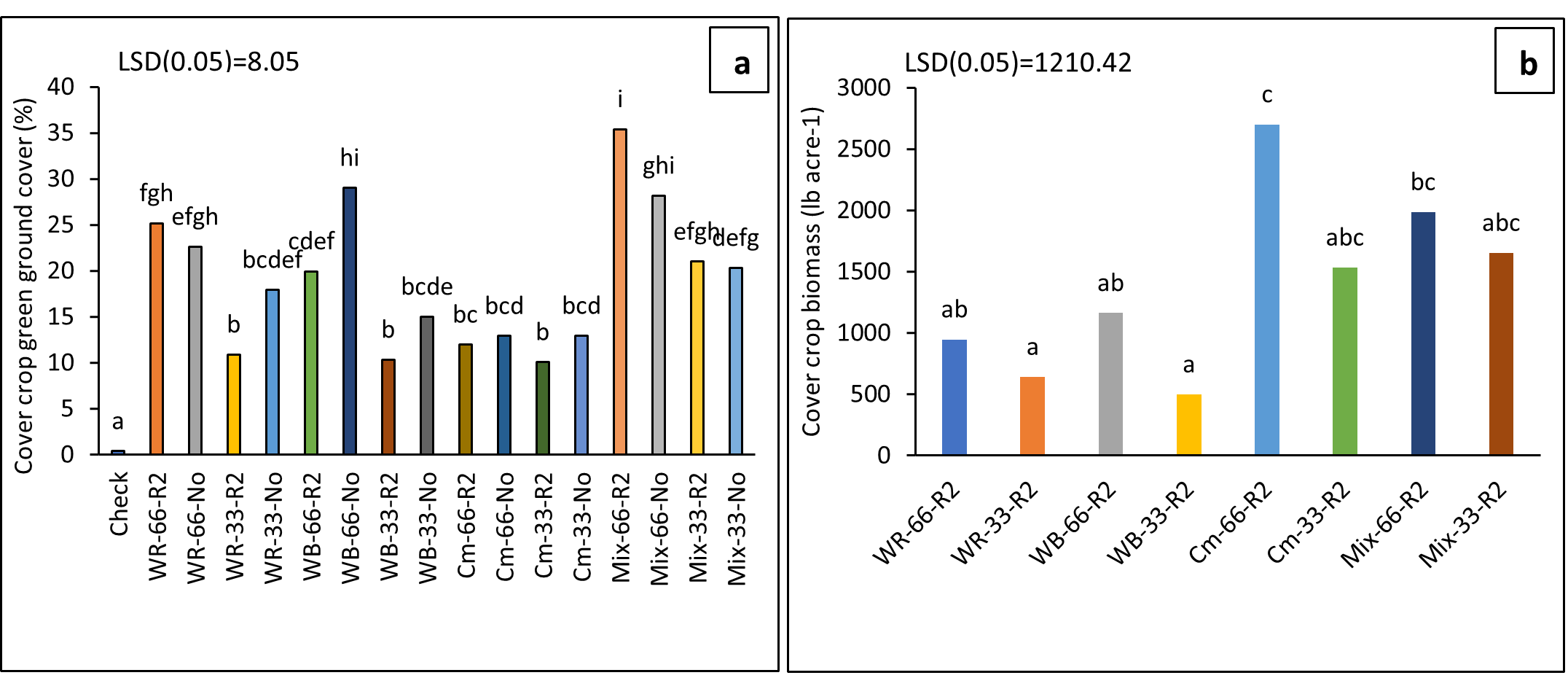Winter barley, winter rye, and the cover crop mix achieved the highest green cover values, exceeding 30%, and provided effective mulch during the early stages of soybean growth (Figure 1a). Soybean plants reached the R2 stage by July 25, when cover crop biomass was sampled. Winter camelina and the cover crop mix, seeded at 66% of the recommended rate, produced significantly higher biomass, averaging over 2,000 pounds per acre (Figure 1b).

Figure 1. (a) Cover crop green ground cover June 27, Carrington. (b) Cover crop biomass at soybean R2 stage, July 25, Carrington.
Abbreviations: WR = winter rye; WB = winter barley; Cm = winter camelina; Mix = WR+WB+Cm; Check: = no cover crop; 66 = 66% of recommended cover crop seeding rate; 33 = 33% of recommended cover crop seeding rate; R2 = cover crop termination date at soybean R2 stage; No = no termination for cover crop.
Soybean grain yield varied across treatments with spring-planted cover crops. Winter camelina, barley, and rye outperformed the check plot (no cover crop) by 2-3 bushels per acre, representing a 5-8% increase (Figure 2). However, these differences were not statistically significant. Nonetheless, these results provide a promising foundation for refining cover crop seeding rates and termination timing. In the context of North Dakota's agricultural industry, a 5-8% increase in soybean yield could have significant economic implications. In Figure 2, soybean yields may decline further if the cover crop seeding rate exceeds 33% of the recommended rate and/or if cover crops are terminated after the soybean R2 growth stage.

Figure 2. Soybean grain yield under different cover crop treatments, Carrington.
Abbreviations: WR = winter rye; WB = winter barley; Cm = winter camelina; Mix = WR+WB+Cm; Check: = no cover crop; 66 = 66% of recommended cover crop seeding rate; 33 = 33% of recommended cover crop seeding rate; R2 = cover crop termination date at soybean R2 stage; No = no termination for cover crops.
These findings are a valuable starting point for optimizing cover crop seeding rates and termination timing for soybean production, adding crop diversity, and improving soil health without decreasing soybean yield. However, further research is needed to draw reliable conclusions.
Acknowledgments: The North Dakota Soybean Council supported and funded this project. This work was a collaborative effort with Larry Cihacek, Ph. D.; Szilvia Yuja; and Naeem Kalwar.
Source : ndsu.edu